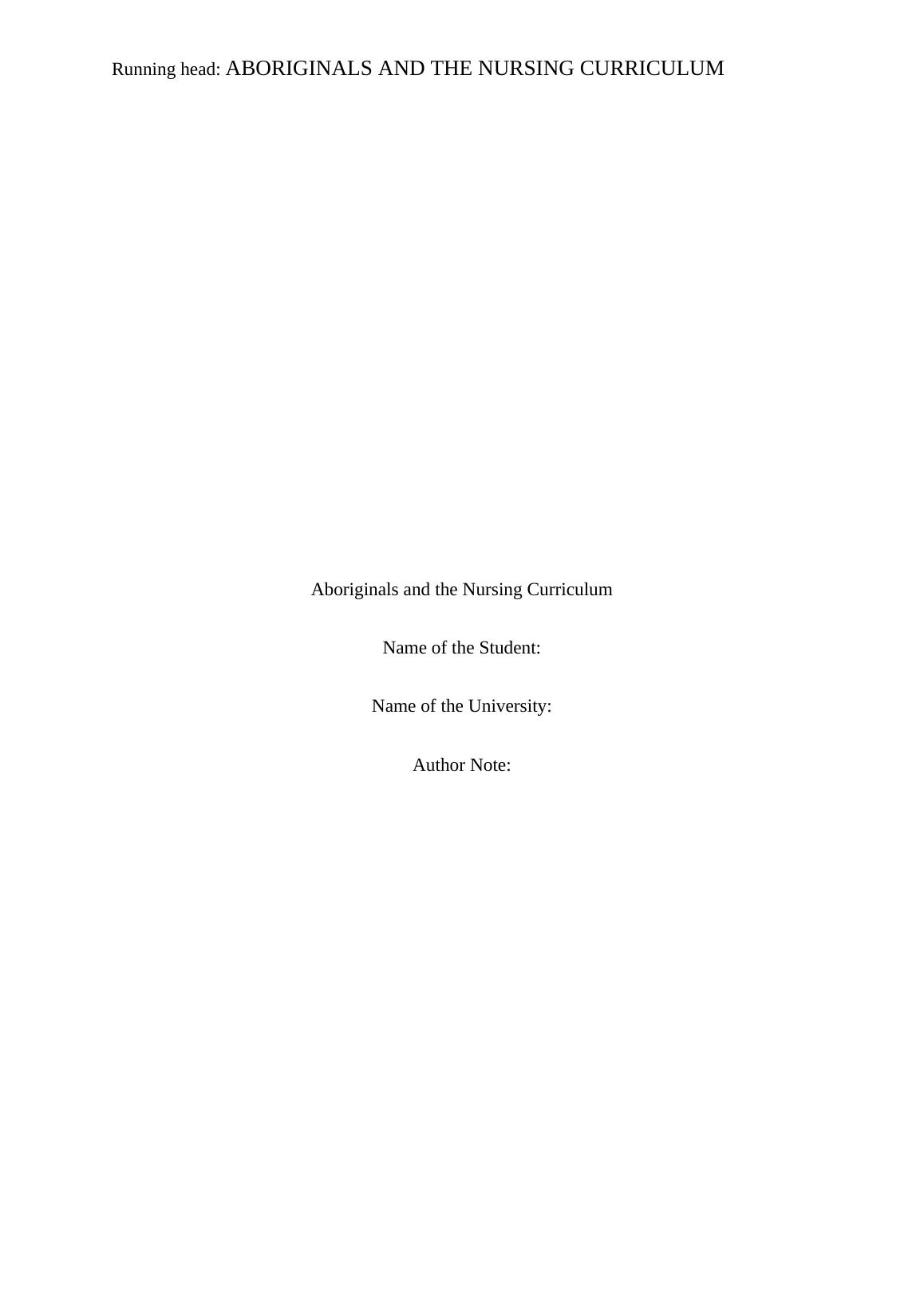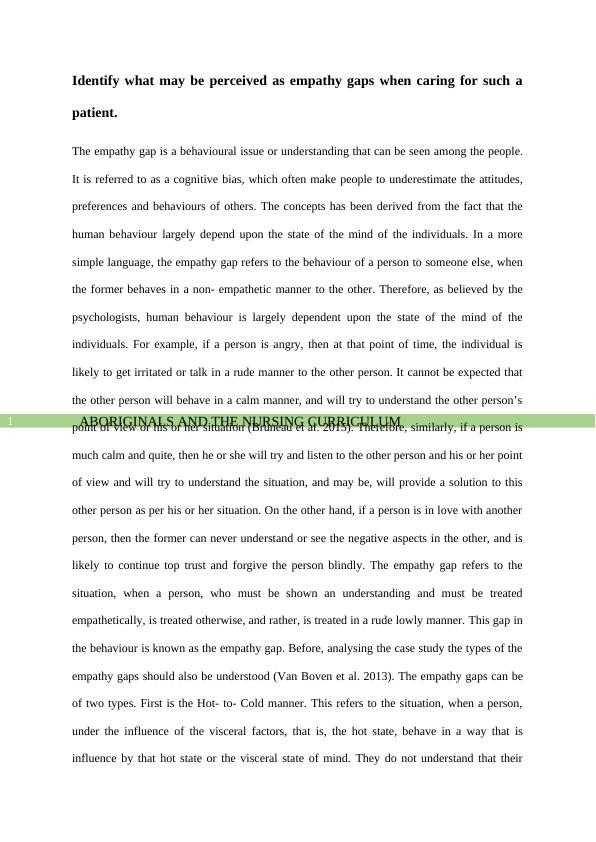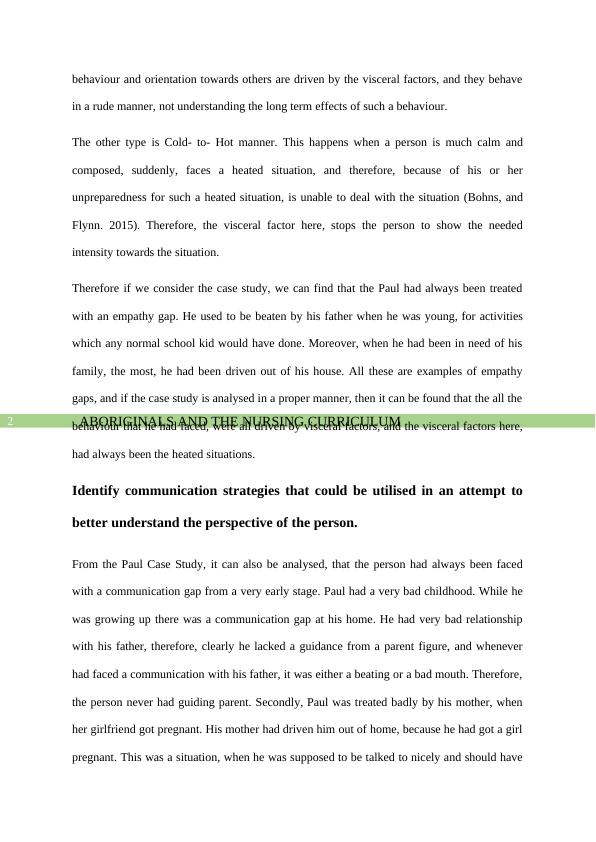Aboriginals and the Nursing Curriculum
This assessment task requires students to choose a case study, identify empathy gaps, analyze personal bias, and consider communication strategies to interact empathically and compassionately with the chosen person.
6 Pages1529 Words361 Views
Added on 2022-10-10
About This Document
This article discusses empathy gaps and communication strategies for caring for Aboriginal patients in the nursing curriculum. The article includes a case study analysis and identifies two types of empathy gaps: hot-to-cold and cold-to-hot. Communication strategies are also discussed, including giving the patient a chance to talk, verifying the accuracy of facts, speaking in a soft and kind manner, showing the consequences of actions, and providing direction for the patient. References are included.
Aboriginals and the Nursing Curriculum
This assessment task requires students to choose a case study, identify empathy gaps, analyze personal bias, and consider communication strategies to interact empathically and compassionately with the chosen person.
Added on 2022-10-10
ShareRelated Documents
End of preview
Want to access all the pages? Upload your documents or become a member.
Aboriginals and the Nursing Curriculum: A Case Study Analysis
|9
|1238
|81
Communication for Empathic Understanding Intent
|5
|858
|236
Emotional Intelligence Assessment
|10
|2006
|15
Importance of Mental Health in Nursing: A Case Study of Bill
|6
|2323
|73
Professional Nursing Practice - Assignment
|6
|1382
|99
Active listening is an interpersonal communication
|6
|1201
|16



